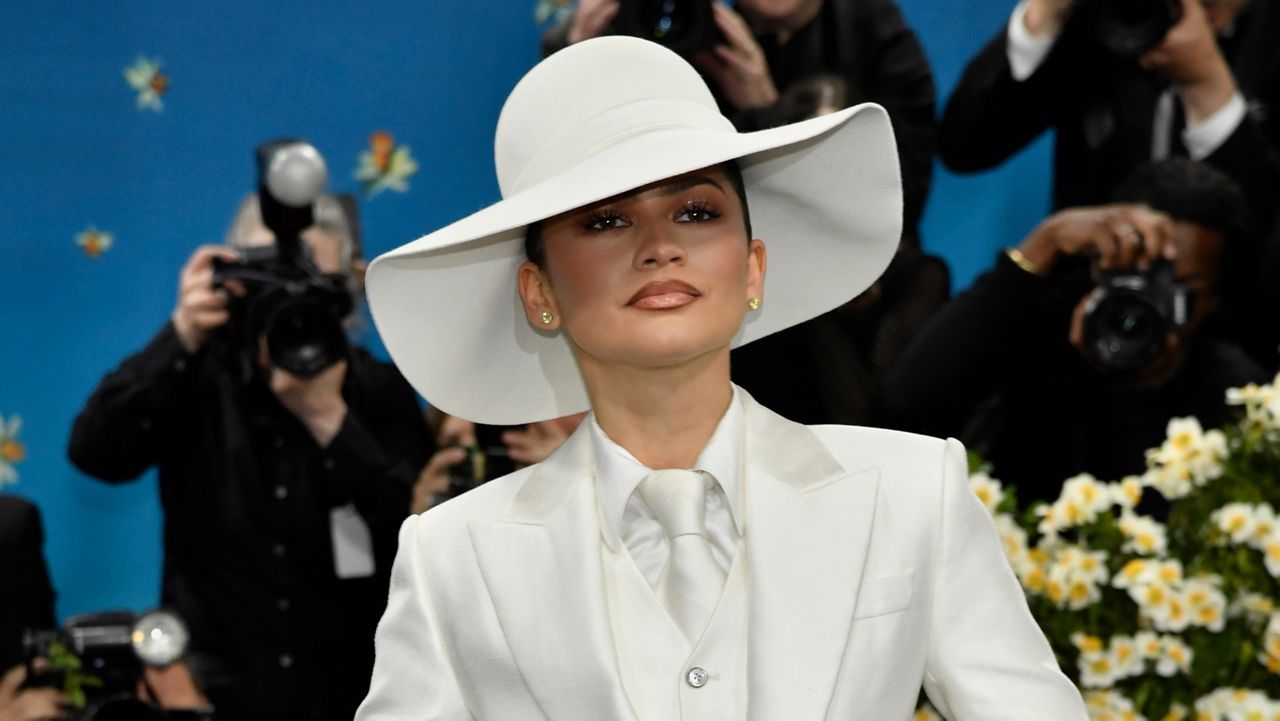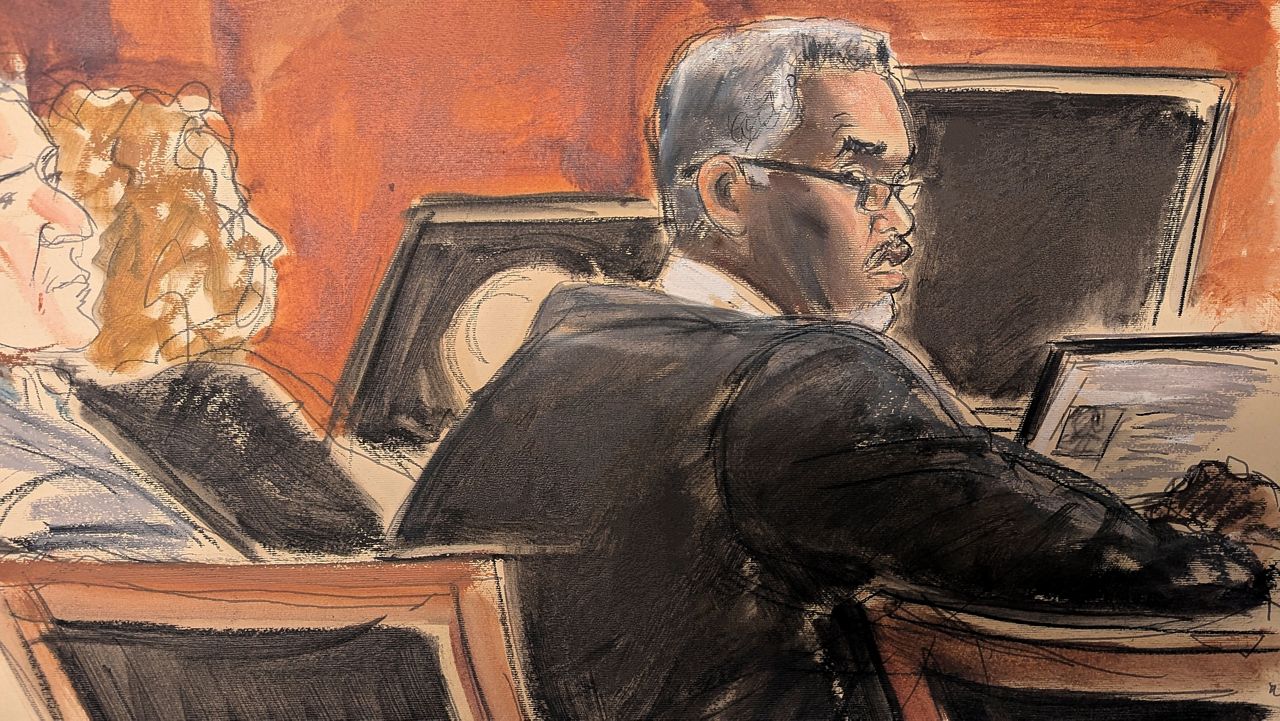Since January, City Hall has made subway safety one of its top priorities.
Mayor Eric Adams announced a safety program that has led to sweeps of homeless people from stations and growing numbers of arrests for offenses like turnstile-hopping. Systemwide, arrests are up 56% over last year, according to police data.
Making the subway feel safe again — for commuters, for tourists, for people still nervous after high profile transit attacks against Asian New Yorkers — is key to the city’s economic recovery, Adams has repeatedly said. NYPD officials have said they are intent on returning a “sense of order” to the system.
An attack on passengers on a subway train in Brooklyn Tuesday has now complicated that effort, alarming residents and bringing national scrutiny to the city’s transit system even as overall crime remains down from recent years, police data show.
“The subway should feel safe, welcoming and inclusive for everyone. And it doesn't,” Danny Pearlstein, policy and communications director for the Riders Alliance, said in an interview. “We have a ways to go to get to that point.”
Despite broad concerns from riders about subway safety, city leaders are encouraging residents to continue riding the trains.
“We cannot let the fear shut our city down,” Councilwoman Alexa Aviles said during an interview Tuesday with ABC News. “We have to continue to use the subways.”
The shooting occurred during rush hour Tuesday morning on a Manhattan-bound N train. Just before the train entered the 36th Street station in Sunset Park, Brooklyn, a man donned a gas mask and set off a canister that filled the train car with smoke, before beginning to shoot nearby riders, NYPD Commissioner Keechant Sewell said at a press conference.
Law enforcement officials said that 29 people were injured during the shooting, including 10 people from gunshot wounds.
On Wednesday NYPD officers arrested Frank R. James, 62, who they said was their only suspect for the attack. James was taken into custody in the East Village of Manhattan after they received a phone tip from someone who saw him in a nearby McDonald's, police officials said at a press conference Wednesday afternoon.
If the subway feels unsafe, Pearlstein said he didn’t believe the Tuesday attack would lead to a major drop in ridership. Previous high-profile incidents, such as when Michelle Go, an Asian American woman, was pushed off of a Manhattan train platform to her death, did not lead to few riders, he said.
“We’ve seen through the pandemic is that what determines ridership is whether people have somewhere to go,” Pearlstein said.
Janno Lieber, chief of the MTA, told NY1 in an interview Wednesday morning that the attack had not substantially impacted ridership through the rest of Tuesday.
“Good ridership yesterday,” he said. “We’ll see what today looks like.”
MTA data released Wednesday showed that ridership levels dropped on Tuesday compared to the previous 10 days.
Tuesday’s attack has also put police efforts to bring subway crime under control into the spotlight. Reported transit crimes are up nearly 70% year-to-date compared with 2021, although the heightened statistics have come amid a massive influx of police into the system, as well as a higher arrest rate.
The Tuesday attack came as police patrol levels in the subway reached recent highs. About 3,500 officers have tours in the system each day, following an influx of 1,000 extra officers after Adams’ announced his subway safety plan. That’s an average of more than seven officers per station.
On Tuesday afternoon, Adams said that the NYPD would double its patrols in subways, and said he would consider adding technology that scanned riders for weapons.
“You’re going to see double the amount of police officers,” he said on WPIX-11.
In the aftermath of the attack, New Yorkers took to social media to point out that the attack occurred despite the large subway police presence.
Olayemi Olurin, a defense attorney with the Legal Aid Society, said in an interview she was concerned that the subway attack would be used as a pretext to add police patrols, despite the fact that officers stationed at the hub where the attack occurred failed to stop or apprehend the attacker.
“There should be an opportunity for more scrutiny for the police, in terms of where we’re placing our money and how we go about this,” Olurin said. “Clearly there is a disconnect between police presence and public safety.”
It’s not clear what role police officers played in the aftermath of the shooting attack. The New York Times reported that a police officer in the station asked people fleeing the smoke-filled train to call 911 on their cell phones, because his radio was not functioning.
At a press conference Tuesday evening, Wilcox, the department’s chief of transit, said that although the station had seen several patrols from officers, who rotate in and out of stations and sometimes ride trains, the station was without a police presence when the shooting happened.
“There were no officers in the station at the time of the shooting,” he said.
Wilcox also said that the officer who said his radio wasn’t functioning likely failed to switch the radio from the department’s above-ground frequency to the one used by officers in the subway.
“It’s user error,” Wilcox said. “It wasn't a problem with the actual radio.”
At least one camera at the station where the shooting occurred was not able to relay its footage to MTA servers, MTA chief Janno Lieber told NY1. The MTA only finished installing security cameras at every station last year, although not every platform has a camera.
Lieber suggested that an increased police presence on subway platforms “deters bad guys,” and that cracking down on offenses that typically warrant summonses, such as turnstile jumping, leads to “catching bad guys, again, and again, and again.”
Yet Pearlstein noted that even when police are nearby, high-profile attacks still occur: There were two officers stationed on the platform where Michelle Go was pushed into an oncoming train, he said.
“There is a real limit to what policing can accomplish anywhere, but especially in the subway,” Pearlstein said.
The attack has also raised fears among transit workers, Canella Gomez, the vice president of the Transport Workers Union, even after ongoing attacks on subway conductors and other MTA employees.
“It’s already a proven fact that New York City transit and NYPD can't protect us transit workers,” Gomez told NY1 Tuesday. “And if transit workers can't be protected, how can they protect the citizens and the riders?”
A spokesperson for NYPD declined to answer emailed questions, and referred to the Tuesday evening department press conference.
Adams tied the attack to the city’s gun violence crisis, citing the “overproliferation of guns” as a major factor in the subway shooting in an interview with NY1 Tuesday afternoon.
Police have recovered a handgun and three extended magazines, including one installed inside the gun that appeared to have jammed.
“This is a real crisis for America, and it's spilling out in the streets of New York City,” he said.
Indeed, on Tuesday evening the city saw another eight shootings in the Bronx and Brooklyn. Two people were killed, including a 15-year-old girl, and 12 others wounded, the New York Post reported.
Adams, who has briefed the media while working remotely after testing positive Sunday for COVID-19, said on CNN that despite the attack, the subway remains safe.
He urged New Yorkers to continue riding the train.
“We cannot allow terror to terrorize us,” Adams said.





_Pkg_Qns_Flood_Relief_Project_CG_1)


_CG_Child_Care_Vouchers)